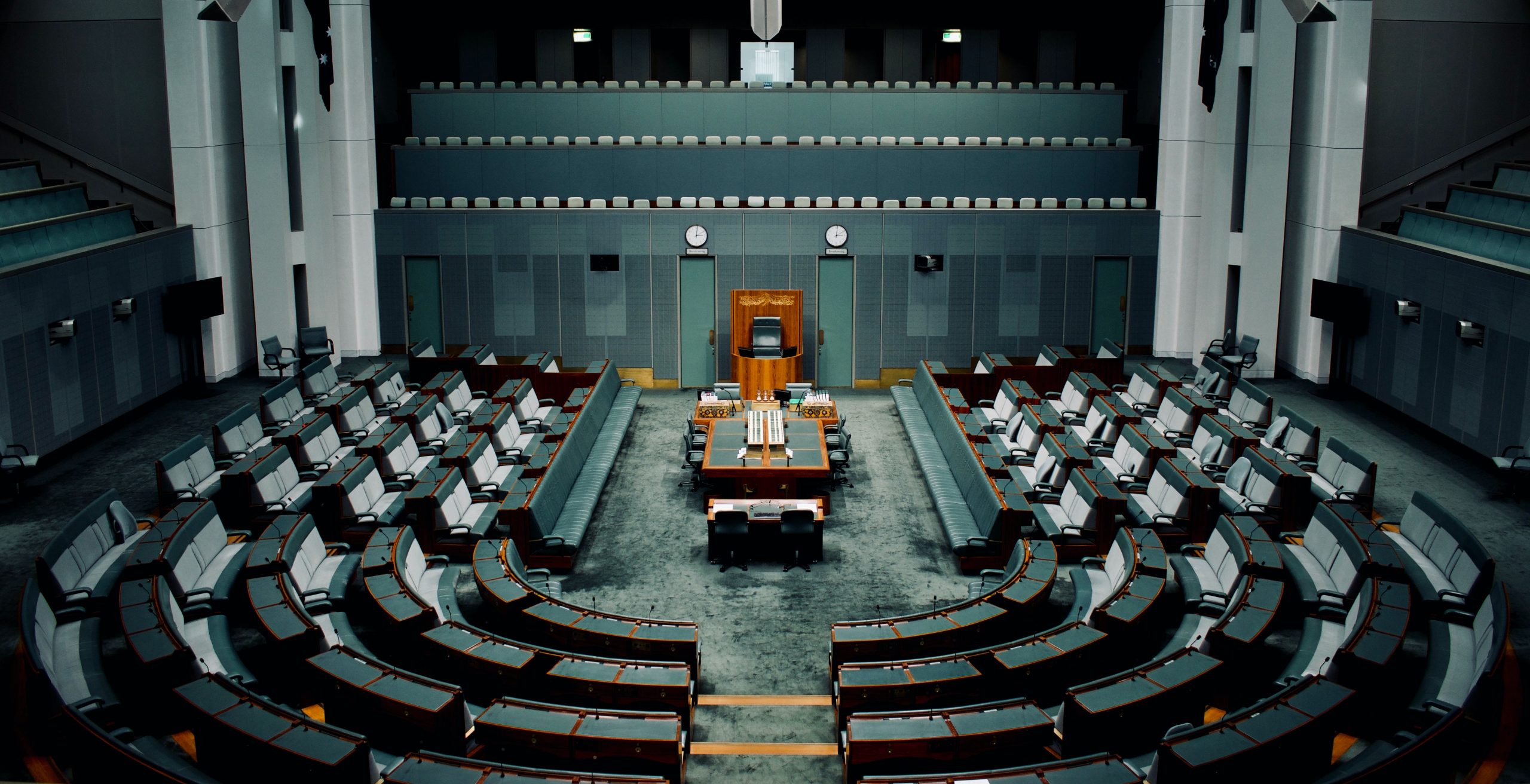
Article Authors, Nelson Savanh & Anna Mincham
Written by Nelson Savanh and Anna Mincham
Last night, Federal Labor delivered their first Budget, giving us a comprehensive look at where Labor’s priorities lie, whether they are following through on their election commitments, and how they plan to manage volatile economic forecasts.
Positioned by Treasurer Chalmers as “solid and sensible”, this budget is the first of two budgets to be delivered this financial year, with the traditional May budget to be handed down in 2023.
Just seven months after former Treasurer Josh Frydenberg delivered his budget in March, Chalmers is facing deteriorating economic circumstances.
At the start of October, Chalmers heralded the increasing likelihood of a world-wide recession, as global markets struggle to cope with the economic fallout of Covid-19, the impact of the war in Ukraine, and rising inflation.
Back in Australia, the annual inflation rate has reached a 21 year high of 6.1 per cent and is expected to hit around 7.75 per cent in December.
Last night, Chalmers said “while we intend to avoid the worst of the turbulence from overseas, we cannot escape it completely,” foreshadowing some difficult years ahead.
While the Treasurer announced funding for cost-of-living pressures, parental leave, childcare, affordable housing, fee-free Tafe, and clean energy, there were also some big announcements for the health sector.
So, where exactly is the money going and what can we expect in May 2023?
Aged Care
 One of the pillars of Albanese’s election campaign was aged care reform, and this budget mirrored that promise.
One of the pillars of Albanese’s election campaign was aged care reform, and this budget mirrored that promise.
Labor will fund more care for older Australians by providing $2.5 billion over 4 years to increase the average care minutes per resident as well as mandate that facilities have a registered nurse on site 24/7 and better food.
Furthermore, the government is also providing $810.2 million for additional support for aged care providers to manage COVID-19.
The budget also confirms Labor’s support for pay rises for aged care workers, pending the outcome of an external review of the sector. The challenge of finding workers and navigating the industrial politics of aged care now begins in earnest.
NDIS
In response to revelations that the NDIS scheme was being rorted by fraudulent claims, costing the government billions, Chalmers reinforced Labor’s commitment to the scheme and those living with a disability.
Total funding for the NDIS will reach $166.6 billion over 4 years, an increase of $8.8 billion from the previous budget. One immediate measure is the $158.2 million for an additional 380 permanent staff for the National Disability Insurance Agency.
$126 million will also go to cracking down on fraud and non-compliance within the scheme.
In a shocking revelation last night, Chalmers told the ABC that the NDIS is expected to cost hundreds of billions of dollars over the next decade, a number far greater than original estimates.
Hospitals/GP Clinics
 Labor announced last night that it will provide $235 million over 4 years from 2022-23 to commence the rollout of Urgent Care Clinics which are designed to reduce pressure on public hospital emergency departments and ensure Australians can easily access non-life-threatening care. This will benefit younger Australians and those living with mental health conditions.
Labor announced last night that it will provide $235 million over 4 years from 2022-23 to commence the rollout of Urgent Care Clinics which are designed to reduce pressure on public hospital emergency departments and ensure Australians can easily access non-life-threatening care. This will benefit younger Australians and those living with mental health conditions.
New Zealand was the first country where Urgent Care was recognised as a branch and the results were positive for lower admissions to emergency rooms.
However, economists have warned to keep an open mind whether this approach really works because it’s only one component of the health crises and there’s no direction as to how Urgent Care Clinics will approach staffing as Australia faces a nationwide labour shortage – particularly with healthcare workers.
For hospitals, states and territories have missed out on an extension of the additional hospital funding that had been made available at the outset of COVID-19. The extra funding of $888 million for 2022/23 will now run out in December.
There will also be $230 million in grants for GP clinics to boost their digital capabilities.
Mental Health
Surprisingly, this budget seemed to somewhat overlook mental health. The budget will restore the 50 per cent loading for telehealth psychiatry services in regional and rural areas. Mental health service provider, headspace, continues to enjoy bi-partisan support, to the benefit of young Australians, with $24 million to expand their network.
Overall, this investment in mental health is a stark comparison to Frydenberg’s 2021/22 Budget, when the Coalition announced $2.3 billion for mental health and suicide prevention.
Medicare/Medicines
 Labor will set aside $750 million for the Strengthening Medicare Fund, informed by the Strengthening Medicare Taskforce and aimed at providing better access and care for patients.
Labor will set aside $750 million for the Strengthening Medicare Fund, informed by the Strengthening Medicare Taskforce and aimed at providing better access and care for patients.
In welcome news for many Australians, the maximum cost of PBS (Pharmaceutical Benefits Scheme) general scripts will drop for the first time in 75 years as part of Labor’s cost-of-living package. From 1 January next year, the maximum co-payment under the PBS will decrease from $42.50 to $30 per script. This is estimated to reduce out-of-pocket costs each year by $190 million.
Following a general theme of this budget, this funding measure will benefit older Australians.
Other Key Takeaways
Cost-of-Living Package
 The most highly anticipated announcement was Labor’s $7.5 billion cost-of-living package consisting of five pillars.
The most highly anticipated announcement was Labor’s $7.5 billion cost-of-living package consisting of five pillars.
In addition to cheaper prescriptions, the cost-of-living package also addresses childcare, paid parental leave, more affordable housing, and wage increases for our lowest paid workers.
Labor followed through on two of their major election commitments; childcare and parental leave. Labor will spend $4.7 billion over 4 years to deliver cheaper childcare to 1.26 million families and $531.6 million over 4 years to expand Paid Parental Leave to 26 weeks by 2026.
In two parent families, a portion of the leave will be reserved for each parent to encourage shared parenting duties. This initiative is expected to benefit 180,000 families per year.
In an exciting development for young Australians, the government has launched a new National Housing Accord between governments, investors, and industry, aiming to build 1 million new homes over 5 years from 2024.
Many of these changes will not come into effect until next year and beyond, so it will be interesting to see if these measures have a tangible effect on the immediate pressures of cost-of-living.
In relation to wage growth, the Treasurer said wages will start growing eventually and it is no longer government policy to keep pay packets low. He forecasted that real wages will not start to grow, however, until 2024.
Climate Change/ Clean Energy
After a decade of climate inaction, this budget has made steps towards climate change mitigation and clean energy.
Chalmers announced $20 billion to fund projects to upgrade Australia’s energy grids to support the uptake of renewable energy, hoping to create an 82% renewable-based grid by 2030.
In a sense of this government’s changed energy priorities, previous funding announcements for dam projects have been cut or deferred. With the Queensland Labor Government’s energy plan centred on pumped hydro mega-projects, the debate around energy storage options and investment will continue.
A tax cut will also be introduced for non-luxurious electric cars, including battery, hydrogen fuel cell, and plug-in hybrid electric cars.
 Labor has also allocated $327 million to help people access solar power when they can’t install rooftop solar, including apartment owners, renters, and regional communities.
Labor has also allocated $327 million to help people access solar power when they can’t install rooftop solar, including apartment owners, renters, and regional communities.
In the wake of numerous natural disasters in Australia, accelerated by climate change, Chalmers announced more disaster relief funding. This included $38 million for volunteer recruitment, $23 million to improve availability and affordability of insurance in disaster prone areas and $200 million per year for disaster prevention programs.
To provide transparency and accountability on Australia’s progress, Labor is investing $42.6 million to restore the Climate Change Authority, introducing an Annual Climate Change Statement to Parliament and increasing transparency around climate-related spending in the Budget.
Women
Compared to the Coalition’s previous budgets which only started to focus on gender in the wake of scandals and sexism in Canberra, Labor’s budget specifically targets gender inequality. Chalmers told parliament that “gender inequality is holding Australia back”.
The women’s budget statement unveiled last night signalled more gender responsive budgeting, hinting at more inclusive policy for women in the future. This is the first time Australia has initiated this type of budgeting, which is an established practice across a number of Organisation for Economic Co-Operation and Development countries.
In addition to childcare and parental leave, Labor committed $32 million to fund Working Women’s Centres in the states and territories, which provide advice and assistance on workplace sexual harassment and discrimination.
We also saw a strong commitment to target gender-based violence towards women and children, as part of the Government’s National Plan to End Violence Against Women and Children, Labor will commit $1.7 billion over 6 years.
Fee-Free TAFE
 The government is committing to delivering 480,000 fee-free TAFE and community-based vocational education places over 4 years. The first step involves entering a $1 billion agreement with the states and territories to provide 180,000 places in 2023.
The government is committing to delivering 480,000 fee-free TAFE and community-based vocational education places over 4 years. The first step involves entering a $1 billion agreement with the states and territories to provide 180,000 places in 2023.
This agreement will prioritise training for students that have traditionally faced barriers to work and study, such as women and First Nations people. We can also expect this to target skill shortages in health education, technology and infrastructure.
What can we expect in May 2023?
While Labor may not have covered all their election commitments in this ‘mini’ budget, there is still time for this new government to deliver.
To this end, we should expect more attention on wages in next year’s budget along with tax reform (including the contentious stage 3 tax cuts) and energy prices, as Australians are expected to be hit by a 20 per cent surge in energy bills in the coming year.
One of the strongest criticisms of last night’s budget was the absence of immediate relief for souring energy prices as Australians struggle to pay the bills. After the announcement, Chalmers hinted that his government would consider regulating energy prices over the coming months.
With the prospect of a trillion dollars’ worth of debt looming, we can potentially expect more cutbacks in the next budget to stem the bleeding. Chalmers’ budget is already expected to produce $22 billion in savings, compared to his predecessor’s budget in March 2022.
If your business requires assistance in understanding how the Federal Budget will affect your organisation, please contact us here.


